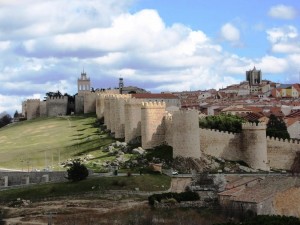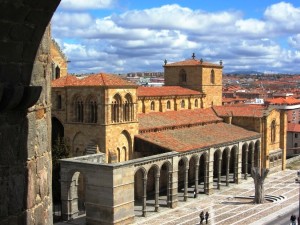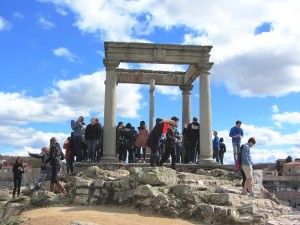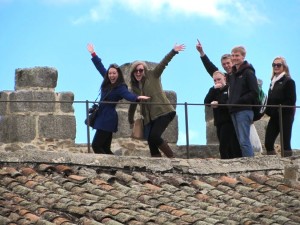

ÁVILA AND TORDESILLAS, A TRIP FROM THE MIDDLE AGES TO THE DISCOVERY OF AMERICA
Ávila
The city of Ávila is located some 120 km from Valladolid, in the southern part of the region of Castilla y León. Built on the flat summit of a huge rocky outcrop, Ávila is the capital city of the highest province in Spain. The city’s history has left us a rich heritage comprising the cathedral, the wall, palaces, churches …, and which led to Ávila being declared a World Heritage site in 1985.
The presence of the three Hispanic cultures has led to the development of abundant literature linked to the three religions, Christian, Jewish, and Muslim. Yet, above all, Ávila is known for having been home to the nun and writer Teresa of Ávila (Santa Teresa de Jesus), one of the leading figures of 16th century mysticism.
Tordesillas
Tordesillas is a town on the banks of the River Duero, in the province of Valladolid, not far from the provincial capital. As a key transit hub, it is an important town located at a strategic point in the communications that link Portugal to the rest of Europe. However, it played an even more important role in the history of Castile and Spain, and indeed the world as we know it today.


DESCRIPTION OF THE TRIP
We will be visiting Ávila in the morning. Students will be touring part of the historical area of the city with the teachers, and then the whole group will take a walk around the wall. Students will then have free time to have a look around the rest of the city.
TOUR OF ÁVILA
In the afternoon the group will meet up to head off towards Tordesillas, making a brief stop on the outskirts of Ávila at a place known as the “Cuatro Postes – Four Posts”, which offers a perfect view of the wall. In Tordesillas, we will be visiting the “Casas del Tratado – Treaty Houses” where, with the help of the teachers’ explanations, we will learn how important that historical event really was. We will then be taking a walk around the town.
TOUR OF THE CITY OF ÁVILA
On our tour around the city, we will be visiting the following important areas:
THE WALL: Ávila’s most distinctive feature is its wall, which is one of the best preserved medieval walls in the whole of Europe. Its early construction coincided with the Christian foundation of the city. The architectural features such as the height of the wall, its thickness, the turrets, or the nine entrance gates, reflect the role it played in military terms in the Middle Ages.
CATHEDRAL: built between the 12th and 15th centuries, it is one of the earliest Gothic buildings in Castile. Physically, symbolically and in terms of its function, it is closely linked to the wall. The chancel or temple apse forms part of the wall, jutting out from it, and was therefore a further element in the city’s defense.
PALACES: in the Late Middle Ages, the nobility had huge family palaces built to reflect their social status. Most display the coat of arms on their façade and are to be found in the upper part of the city.
BASILICA OF SAN VICENTE: Ávila boasts rich religious architecture spanning many periods in history, although particularly noteworthy is its Romanesque. The Basilica of San Vicente, situated outside the wall and built between the 12th and 14th century, is a prime example.
TOUR OF TORDESILLAS
TREATY HOUSES: two palaces that are linked, the more modern one dating from the 17th century, and the older one from the 15th, and which witnessed one of the seminal events in world history: the signing of the Treaty of Tordesillas in 1494, an agreement through which the kings of Castile and Portugal decided who was to own each of the newly discovered lands on the other side of the Atlantic.
STATUE OF QUEEN JUANA: in the modern–day gardens opposite the Treaty Houses, it is a reminder of the palace where Queen Juana I, known as “Joanna the Mad”, lived from 1509 to 1555. Every year in March, the town commemorates and acts out the arrival of Queen Juana accompanying the coffin of her husband, Philip the Handsome.
MAIN SQUARE: A typical 17th century Castilian square, entry to which is gained from one of four streets. It is a place where medieval markets and games are held, and is today a meeting place with bars and cafés running the length of its colonnade and porticoes.


